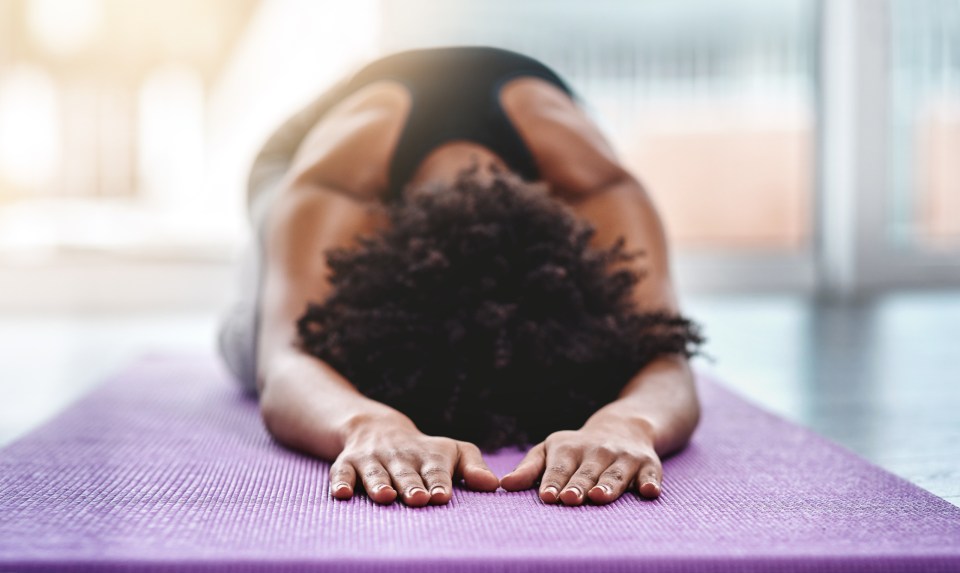As the United States implements social distancing measures in response to COVID-19, you most likely find yourself spending more time at home than ever. Combined with the anxiety and stress you may be feeling during this unprecedented time, the disruption to your routine could start to take a toll on your health, both mentally and physically—but it doesn’t have to.
Below, are ways you can combat these feelings and adapt to your new routine and stay healthy—or even improve your health—while at home.
Control your environment for a mental boost
It’s normal to feel out of control in uncertain times. That’s why Jenny Loehr, speech language pathologist and field integration lead with Encompass Health – Home Health & Hospice, recommends focusing on what you can control.
Be mindful of the messages you are receiving
Loehr’s first tip is a simple one—stay cognizant of how much time you are spending watching television. As you are spending more time at home, you’re likely spending more time in front of the TV, be it watching actively or simply using the news as background noise.
“In a time like this, you’re receiving negative messages 24/7,” she explained. “The television truly tells you how to feel, and it isn’t always good.”
Since you can’t completely swear off television, especially in chaotic times where staying up to date on the news is important, Loehr recommends creating a structure for TV times. Setting designated times for viewing allows you to stay in the know with the happenings of the world, while also keeping a sense of control of your environment.
Finding these small ways to instill order in a world that feels incredibly chaotic can make a big difference for your wellbeing. Another way to do that is to set limitations to the use of smartphones and social media as well.
“Your brain needs that time for silence,” she said. “Keep in mind what kind of messages you’re getting all the time. If you’re starting to feel added stress and negativity, it could be stemming in part from the messages coming at you all the time.”
Set yourself up for success, starting with your environment
If you are new to working at home, Loehr recommends setting yourself up for success by establishing a clearly defined workspace and a clearly defined routine, much as if you’re still going into the office.
Choose your workspace and try your best to remove distractions from your environment. Organize and clean your space to reduce stress that excessive clutter can cause.
Make your bed, and take time for coffee and breakfast before you sit down at your desk for the day. Putting on work-style clothing helps Loehr set her mind on work for the day.
“It means a lot to stick to those routines that you had previously,” she said. “During this time of uncertainty, we know we’re going to feel stress because the world is out of control. At the end of the day, I try to remind myself that there are still so many things I am able to control, and that helps.”
Staying active for physical health
It’s no secret that exercise releases endorphins, and during times of stress or worry, those endorphins can help boost your mood. If you’ve suddenly found your daily life turned upside down due to COVID-19 and social distancing practices, it’s important to find time for exercise.
Adherence to social distancing and stay-at-home orders means many Americans now find themselves working at home. This means you’ve likely experienced a decrease in physical activity as your bathroom and kitchen are now closer and you’re no longer walking into the office.
This extra time spent sitting can provide a hit to your postural muscles and lead to increased back pain over time, said Emily Fiocchi, physical therapist assistant at Geisinger Encompass Health Rehabilitation Hospital. Regardless of your exercises of choice, it’s important to target those postural muscles—the entire group of muscles that makes up your back side.
“Your postural muscles really can go south very quickly if you’re spending a great deal of time sitting,” Fiocchi said. “That’s everything from the back of your head down to your tailbone.”
When considering an exercise routine, Fiocchi recommends considering the tasks you’ll return to once social distancing guidelines are lifted. Those who are used to spending most of the day on their feet should prioritize continued walking to stay acclimated.
Strength exercises
When choosing exercises for strength training, keep an eye toward those postural muscles, Fiocchi said. Below are a few examples of movements she recommends to strengthen postural muscles:
Lunges: Though they are a lower body dominant workout, lunges require balance and stability and help to strengthen the glutes, outer hip and core, which are key in maintaining lower back health.
Planks: When done with proper form, the plank exercise reaps outstanding benefits. If you’ve got the basic plank down pat, consider adding a forward reach, or a leg kick. Those leg kickbacks will work the hip extensors, which help you maintain postural alignment for the pelvis.
Rows: When performing rows you use your upper back and shoulder muscles. This postural exercise will help to counteract the time you may spend with your shoulders hunched forward. Consider adding these while in plank using gravity or weighted resistance.
Yoga
As a certified yoga instructor, Fiocchi recommends yoga as a form of exercise both for its physical and mental benefits.
“When you practice yoga, you can get in touch with those deeper systems that go haywire during times of anxiety,” Fiocchi said. “If we’re in that fight or flight mode, we need to be able to put ourselves in that state of focus rather than let our heads go crazy.”
You don’t have to be an advanced yogi to reap the benefits of yoga, Fiocchi said. A simple sun salutation, or several poses fluidly connected, can help you stretch your muscles, breathe deeper and connect with your body to ease stress and anxiety.
If you choose to follow along with one of the many yoga classes available virtually, Fiocchi offers tips for getting the most out of your practice.
“The purpose of yoga is to get away from distractions, and you can be distracted by the screen and teacher,” Fiocchi said. “If you can follow along with your eyes closed and focus on your breath and movements, not keeping up with the instructor, you’re going to get the best benefit.”
Cardio
Cardio is a key component in any exercise regimen, and is especially important if you’re now sitting more than ever. If you’re not up for running, consider taking walks throughout the day.
Not only is walking beneficial for your cardiovascular system, but it can also help with feelings of social isolation. If you live in an area where outdoor activity is still permitted, you may see many new faces out for strolls. If you’re struggling with feeling isolated, even those brief interactions from a distance can improve your mood.
“Just seeing other human beings does wonders,” Loehr said. “You can say hello, smile and wave from a distance.”
Diet hacks to stay on track
Stick to a schedule
For many, working at home means working in closer proximity to a pantry or refrigerator than ever before. That’s where simple scheduling and structure can help, said Angie Nyp, Encompass Health’s national senior manager of nutrition services.
“At work, you’re not constantly going back and forth to the pantry,” Nyp said. “Schedule a time for your meals and times for snacks, but try to actually have it planned out.”
Although it may be tempting to sit down at your desk and power through lunch, when possible, try to separate your work and meal spaces.
Make better beverage choices
If you’re reaching for sodas more frequently, consider subbing with green tea as it offers many immunity boosting benefits. Working from home also doesn’t mean you can now slack on your water intake, Nyp said. Aim to drink as many ounces as half your body weight in pounds. For example, an individual who weighs 150 pounds should drink at least 75 ounces of water.
Stay smart at the grocery store
If you’re trying to cut down on store visits during this time of social distancing, consider frozen vegetables and sources of lean protein. Beans can serve as a stand in if meat options are limited.
In highly stressful times, it may be tempting to stock up on the comfort foods. Don’t be afraid to indulge in some of those foods, Loehr said, but consider your ability to stay conscious of how much you are consuming.
“When you mindlessly indulge in your comfort foods, before you know it, you can easily lose your self-control,” Loehr said. “In a world that seems very out of order, this may feel like just another situation you can’t control.”
The content of this site is for informational purposes only and should not be taken as professional medical advice. Always seek the advice of your physician or other qualified healthcare provider with any questions you may have regarding any medical conditions or treatments.


